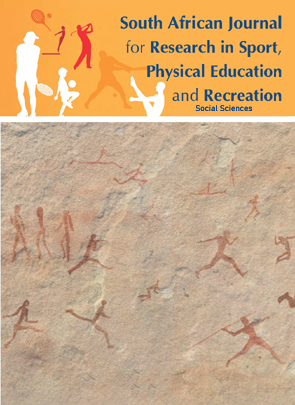ISOKINETIC KNEE MUSCLE STRENGTH ASYMMETRY IN UNIVERSITY SWEEP ROWERS
Main Article Content
Abstract
The prevalence of musculoskeletal injuries in sweep rowing is high. As nearly 50% of power during sweep rowing is contributed by the legs, the presence of muscle imbalances may predispose rowers to overuse injuries. The purpose of the study was to assess knee muscle strength symmetry between dominant and non-dominant limbs of male and female rowers. A descriptive, quantitative research design was used. Twenty-four male and 13 female rowers aged 18–26 years participated. Bilateral isokinetic knee flexion and extension peak torque and hamstrings/quadriceps (H/Q) ratios were assessed at 60°/s and 180°/s using an isokinetic dynamometer. The data was analysed using Mann-Whitney U and Wilcoxon rank tests and significance was set at p≤0.05. In males, the dominant knee extension torque values at 60°/s and 180°/s were significantly larger than that of the non-dominant side (p≤0.05). In females, the non-dominant eccentric H/Q ratio at 60°/s was 15% larger than that of the dominant side (p=0.019). Bilateral differences observed in knee extension torque for males and in H/Q ratio for females highlight the need for isokinetic testing of sweep rowers, to improve performance and prevent injury.

